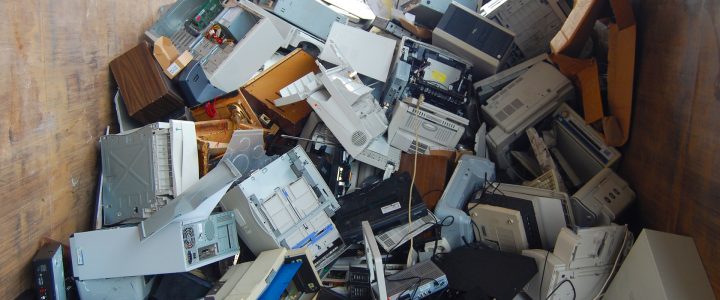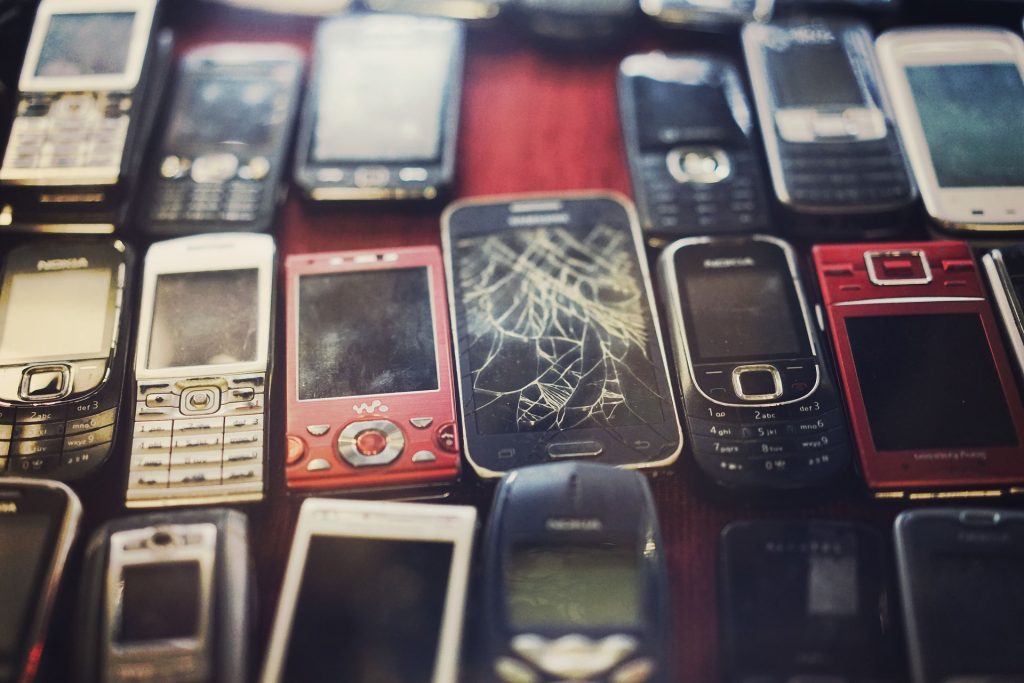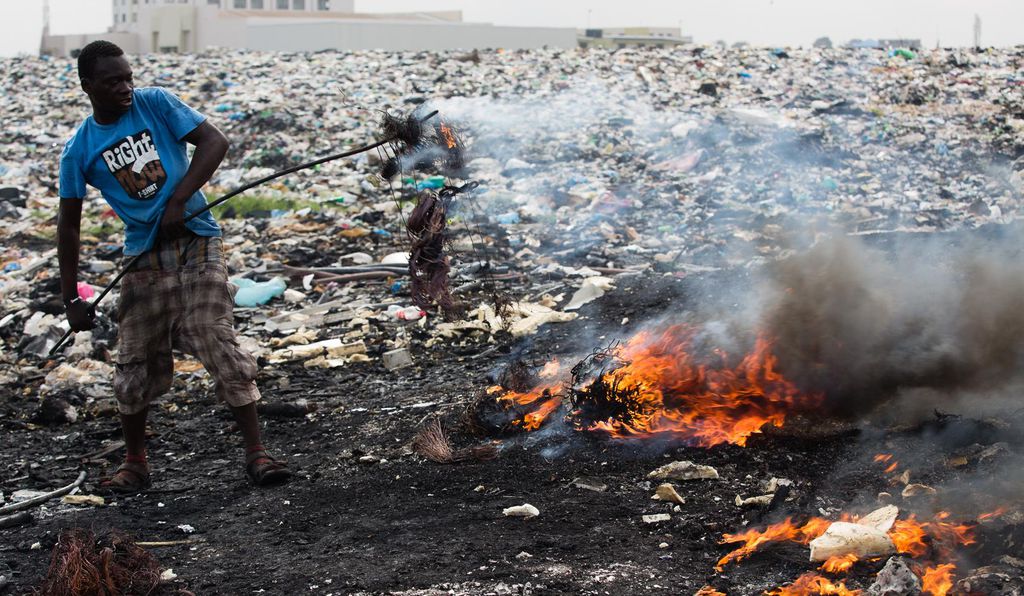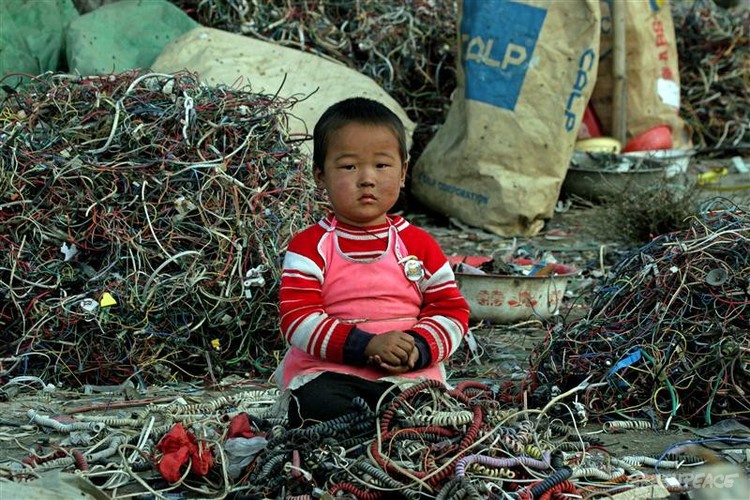
…as well as your monitors, laptops, cellphones, TVs, stereos, kitchen appliances, cables, and all of the other electronic stuff in your life that has become “junk”.
Every year the world produces approximately 50 million metric tons of electronic or “e-waste.” This is more than the weight of all the commercial aircraft ever made, looks like 4,500 Eiffel Towers, is enough to completely cover an area the size of Manhattan, and is roughly worth $62.5 billion USD.
Somewhere around the weight of 150,000 airplanes junked every year? Four thousand five hundred Eiffel Towers? It’s stunning to even imagine that we have the capacity to produce that, let alone throw it out.
Only around 20% of this global e-waste is ever formally recycled. Most of the remaining 80% is incinerated, releasing dangerous chemicals as well as CO2 into the air. Or it goes straight to landfill where chemicals and heavy metals can seep into the ground and, ultimately, contaminate our drinking water supplies (as well as other bodies of water causing damage to marine ecosystems).
Some of it finds its way around the world to be disassembled by hand or burned by the world’s poorest workers in order to access valuable materials such as gold and copper. This crude form of urban mining has consequences for people’s health and well-being, and creates untold pollution as dangerous chemicals are again released into the air, seep into the ground, and contaminate water. Direct exposure of workers and people in the surrounding areas to lead, cadmium, brominated flame retardants, or polychlorinated biphenyls (PCBs) poses extreme health risks, particularly to the most vulnerable – children. Additionally, there is the risk of injury during the salvaging and dismantling of items by hand. Agbogbloshie in Ghana and Guiyu in China (once known as the e-waste capital of the world) are two of the most notorious of these e-waste dumping sites.
Our ever-increasing demand for the latest technology and retailers’ rush to provide, as well as stir this demand, has created what the Executive Director of the UN Environmental Programme termed a “tsunami of e-waste rolling out over the world.”
How do you stop a tsunami?

As the world slowly wakes to the reality of the fastest growing refuse stream of this century, international calls for action are becoming louder and more vocal. UN agencies have come together as the UN E-waste Coalition to call for an overhaul of the current electronics system. Countries like Nigeria are kicking off initiatives to create circular e-waste systems. Manufacturers like Apple are devising more efficient and safe recycling methods like Daisy, a robot designed to disassemble iPhones to reclaim valuable metals.
What can you do?
We’ve become conditioned by the retail biz to want the next, best, brightest, shiniest object. And we should want it yesterday. So, the first thing to do when deciding to replace your electronics is think about whether they need replacing at all. Are you picking up the latest iPhone because your old one can’t make calls anymore or because Apple just released a new one? Do you need a new fridge because the color is no longer en vogue or because it’s no longer keeping your food cool?
If you decide to replace still functioning items, consider resale or donation before throwing them out. If you can make back a buck or save one for someone in need, it’s always a more sustainable choice than disposal.
Recycle your waste items properly. Check out the rules for your community. Do a quick search (and plant a tree) with Ecosia and find out what can and can’t be recycled, along with what items can be left curbside and what items need to be taken to a drop-off center.
Have you heard of Greendisk? In the US, they offer an e-waste solutions service that includes a collection box, all transportation, the destruction of content on media, and recycling of your items.
In NYC, we learned that many retailers will actually accept e-waste for recycling and safe disposal, including Best Buy and Staples. Just check with your local stores to see what and how much they’ll accept. And did you know NY State law requires all wireless carriers to accept cellphones for recycling free of charge? Yep! So, definitely take advantage of that!
Check out GrowNYC for more info on NYC e-waste recycling, including what to do with everything from batteries to ACs. It’s pretty amazing to learn with a quick internet search that there’s so much we as individuals can do to stop the rising tides of e-waste. So, do the same wherever you are!






